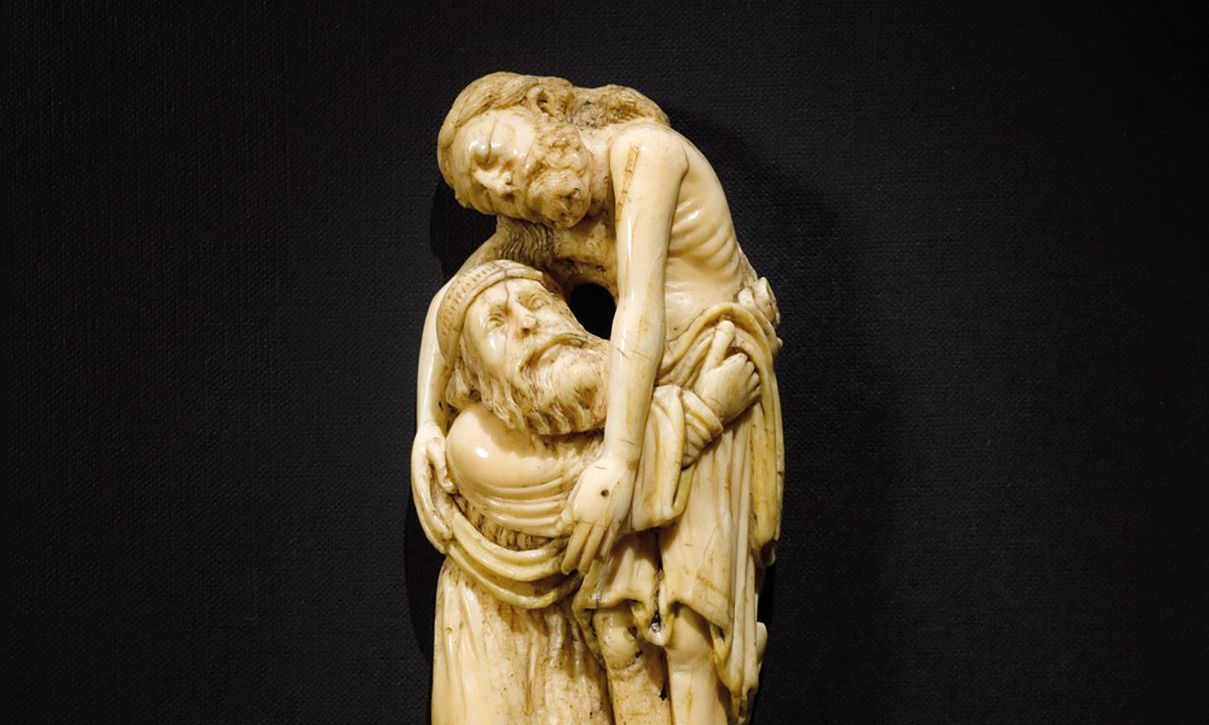Deposition from the Cross (around 1190-1200) was originally part of a much larger Passion altarpiece ensemble Photo: © Department for Culture, Media and Sport
London’s Victoria and Albert Museum (V&A) and New York’s Metropolitan Museum of Art are now vying to buy an extraordinary Romanesque ivory carving. Dating from 1190-1200, Deposition from the Cross, shows Christ's body being taken down after the crucifixion.
The Met has bought the £2m sculpture, subject to it being exportable from the UK. However, an export licence has now been deferred a second time, to enable the V&A to try to match the price. The initial deferral period finished earlier this month, but this has now been extended until 14 June.
Normally UK export licences are only deferred on artworks that have been in the country for over 50 years. In the case of the Deposition, it may have been in Britain for around 42 years, but because of the sculpture’s unusual importance, a licence was nevertheless deferred.
The Deposition was on loan to the V&A from 1982 to 2022 and its director, Tristram Hunt, describes it as "one of the most beautiful, entrancing and historically important items to have been on display at the museum”. Considering the V&A’s wide-ranging collection, this represents high praise.
Carved from walrus ivory, the Deposition was probably made in York, so it has close ties with the UK. Nothing is known of its history until it was acquired by the London-based antiquarian collectors and dealers John and Gertrude Hunt, sometime in the mid-20th century. Last year their heirs sold it to the Met for $2.5m (around £2m) in a private transaction through Sotheby’s.
The V&A now faces the challenge of raising the money. Preliminary discussions have begun with the Art Fund (a charity supporting museum acquisitions) and the National Heritage Memorial Fund (which receives government money). But they would only provide part of the cost, so other major private and charitable donors will need to be found.
The Deposition scene was originally part of a larger ensemble of the Passion, or the death of Christ. The section now being sold depicts Joseph of Arimathea gently lowering the body of the dead Christ. A smaller surviving fragment, which was donated to the V&A in 1949, shows Judas at the Last Supper.
The full altarpiece would most likely have included the Virgin Mary and St John the Evangelist in the Deposition. There might even originally have been five separate scenes of the Passion: the Last Supper, the Crucifixion, the Deposition, the three Marys at the tomb and the Ascension.
The Deposition fragment is 18cm tall and this ends where the missing cross bar of the crucifix would have been placed. If a conventional crucifix, it suggests that the full piece may have been roughly 25cm high. And if the altarpiece had five scenes, it might have been much wider.
It is likely that the rest of this impressive altarpiece was destroyed, but it is just possible that other fragments could survive in private collections, unidentified. Publicity connected with the sale of the Deposition might lead to their discovery.
The fact that both a UK and international museum are hoping to acquire an artwork subject to an export licence deferral raises the intriguing possibility of a collaboration. Last April a precedent was set when London’s National Portrait Gallery and Los Angeles’ J. Paul Getty Museum jointly bought the £50m Reynolds Portrait of Mai (around 1776).
So far, however, the V&A is attempting a sole purchase of the Deposition—and the fact that it already owns the Judas fragment makes it the most appropriate home. The Met is declining to comment.

